Introduction
Learning is a constant part of our lives. We learn in school, at work, or while solving everyday tasks. But did you ever think about how you actually learn? How could the Leitner System help you achieve better results? It’s a question worth exploring.
Effective learning techniques are like boosters for your brain. You don’t need to study for a long time without stopping. Instead, you can use smart ways to make your learning process smoother.
We all know that having the right tools can make a job easier. And that’s why we have hammers, saws, vacuum cleaners, etc. The same way right learning techniques help your brain absorb information. And this is where the Leitner System steps in – as a reliable companion in your pursuit of knowledge.
In this ultimate guide, we will explore the Leitner System and uncover how it can enhance your learning adventure. So, let’s go!
1. Leitner System Basics
What is the Leitner System?
The Leitner System is a method of spaced repetition. It was developed by German psychologist Sebastian Leitner in the 1970s. It employs the use of flashcards, which are categorized into different boxes or levels.
The Leitner System based on the following principle: the more frequently you review a piece of information, the more likely you are to remember it. The system helps to remember information better by controlling how often you review the material.
Initially, all flashcards are placed in the first box, and then you review them regularly. If you answer a question correctly, you move the card to the next box. But if the answer is wrong, the card goes back to the first box.
As you progress through the boxes, the intervals between reviews become longer. It allows to concentrate on the cards that are more challenging for you.
The Science Behind Leitner System
Leitner System is built upon Spaced Repetition System. Spaced repetition is a fascinating learning technique rooted in the intricate workings of our brain. It’s a method that harnesses the natural rhythms of memory to enhance how we retain information.
When we first learn something, it’s like planting a seed in our memory. However, if we don’t water that seed, it tends to wither away. Spaced repetition acts as that nourishing water, but in a clever way.
Our brains have a tendency to forget things over time. However, each time we revisit a piece of information just as we’re about to forget it, we’re reinforcing the neural pathways associated with that memory. This is the key to spaced repetition. It takes advantage of this forgetting curve by strategically scheduling review sessions right when we’re on the verge of forgetting.
The Leitner System is incredibly effective because it optimizes our brain’s ability to store information in our long-term memory and easily recall it when needed. It takes advantage of our brain’s natural tendencies and transforms forgetfulness into a powerful tool for learning. It’s a scientific approach that can significantly boost our retention and comprehension, making our learning journey smoother and more effective.
Flashcards, Boxes, and Timetable
The Leitner System introduces a clever approach to learning through its core components: flashcards and boxes. These simple yet effective tools work in harmony to optimize memory retention.
Imagine flashcards as tiny information containers. They hold key facts, concepts, or questions on one side and their corresponding answers on the other. These cards shrink knowledge into small manageable pieces, making it easier for your brain to absorb and remember.
Now, let’s talk about boxes. Think of them as organized levels of memory strength. When you successfully recall the content of a flashcard, it moves up a level to a more advanced box. On the other hand, if you struggle to remember, it moves down to a lower box. This dynamic sorting system ensures that you focus more on the content that challenges you, gradually reinforcing your understanding.
The timetable is an essential aspect of the Leitner System, as it dictates when each box should be reviewed. Flashcards move between boxes based on how well you remember them. Those you find easy appear less frequently, while those you find challenging come up more often. This method leverages your brain’s tendency to forget and relearn, making your memory stronger over time.
The combination of flashcards and boxes in the Leitner System transforms learning into a dynamic process. It adapts to your memory strengths and weaknesses, maximizing your study efficiency and promoting a strong and lasting grasp of the content.
2. Leitner System vs. Other Methods
Leitner System vs. Feynman Technique
The Leitner System is a flashcard-based method that involves organizing information into different levels of difficulty and reviewing them at specific intervals.
The Feynman Technique uses another approach. It simplifies complex concepts by breaking them down into smaller, more manageable parts.
Both techniques have their cons and pros. The level of their effectiveness can vary for every person, based on their preferable learning style and the subject they are studying.
Leitner System vs. SQ3R and PQ4R Methods
SQ3R, which stands for Survey, Question, Read, Recite, Review, is a structured reading approach. It encourages pre-reading organization and engages active participation during reading, particularly effective for grasping main ideas from complex texts.
PQ4R, short for Preview, Question, Read, Reflect, Recite, Review, builds on SQ3R by adding reflection. It emphasizes critical thinking and a personal connection to the material, making it well-suited for deep learning, research, and academic reading.
In essence, the Leitner System excels in spaced repetition and memory reinforcement, SQ3R focuses on structured reading and comprehension, while PQ4R integrates reflection for a deeper understanding.
Leitner System vs. Traditional Studying
Traditional studying involves methods like reading and note-taking. While it’s familiar and straightforward, it might lack the systematic reinforcement that the Leitner System provides. Without a strategic approach, traditional studying can sometimes lead to information overload and lower retention rates.
The Leitner System’s emphasis on active recall and spaced repetition sets it apart from traditional studying. While traditional methods offer simplicity, the Leitner System offers a scientifically backed way to enhance memory retention and comprehension. Integrating both approaches could provide a well-rounded learning experience tailored to individual needs.
Cons and Pros of Using the Leitner System
The main benefit of the Leitner System is that it helps learners prioritize study materials by dividing them into different levels of difficulty. This lets learners start with the challenging material and then move to easier content. This is especially useful for people who have a lot to cover or find managing time difficult.
Another advantage of the Leitner System is its emphasis on repetition. When we review material using Leitner System schedule, our brain in more likely to remember it in the long run. That’s why this technique can particularly help individuals preparing for exams or requiring to remember a substantial amount of information for their professional tasks.
However, there are also some downsides to using the Leitner System. One concern is that learners might rely too much on the system and not learn other study skills. Some people might also find the system too strict or inflexible, which could make them frustrated or lose interest.
Overall, the Leitner System can be an effective study tool for many learners. But remember, it’s crucial to think about all the cons and pros and decide if this way of learning works well for how you learn and what you need.
3. Getting Started
How Many Boxes Should I use?
Deciding on the ideal number of boxes or levels for the Leitner System isn’t a one-size-fits-all choice. The number you go for relies on different factors and your unique learning goals.
Traditionally, the Leitner System employs five boxes, each representing a different stage of memory reinforcement. But you can adjust the number of boxes based on your personal preferences and the complexity of the material you’re studying.
Below are several tips to help you make right a choice:
Material Complexity: If you’re dealing with complex subjects or detailed information, having more boxes can provide a more gradual and effective review process. This is particularly helpful for in-depth studies like advanced sciences or languages.
Time Commitment: More boxes mean a longer progression before information reaches the final stage. Consider your available time and how frequently you want to review your material. If you’re looking for a faster review cycle, fewer boxes might be more suitable.
Learning Pace: Your personal learning pace matters. If you tend to grasp concepts quickly, you might benefit from fewer boxes. If you need more time to absorb information, more boxes can offer a slower and gentler review progression.
Subject Variety: If you’re studying multiple subjects simultaneously, a higher number of boxes can help you manage and prioritize your review sessions effectively.
Long-Term Goals: Consider your ultimate learning objectives. Are you studying for a test, or do you want to retain this knowledge for the long term? More boxes can lead to stronger and more enduring memory retention.
Trial and Error: Experiment with different box numbers and see what works best for you. Over time, you’ll develop a sense of how many boxes provide the optimal balance between reinforcement and efficiency.
The Leitner System is versatile and adaptable. You can start with the traditional five boxes and adjust as needed based on your experiences. The key is to find a balance that keeps your review process effective, manageable, and aligned with your learning goals.
Creating Effective Flashcards

Creating effective flashcards for the Leitner System involves careful planning and consideration, and it can tale time and practice. Here are some useful tips and tricks to help you craft impactful cards:
- Be Concise: Keep your flashcards succinct. Use short sentences or bullet points to capture essential information. Avoid lengthy paragraphs or excessive details.
- Focus on Key Concepts: Identify the core concepts or key information you want to remember. Highlighting essential points will make your cards more effective.
- One Fact per Card: Each flashcard should contain only one piece of information. This enhances the efficiency of your review sessions and prevents confusion.
- Use Clear Language: Write your flashcards in simple and straightforward language. Avoid jargon or complex terms that might confuse you during review.
- Include Visuals: Visual aids like diagrams, images, or charts can enhance your understanding and memory retention. Use them when relevant.
- Use Contextual Clues: When creating flashcards for definitions or terms, consider including contextual clues or examples to help you understand their application.
- Vary Question Types: Create a mix of question types, such as multiple-choice, fill-in-the-blank, or true/false. This diversifies your review process.
- Personalize Cards: Use your own words and relate the content to your understanding. This personal connection aids in memory recall.
- Prioritize: Focus on information that is challenging or unfamiliar. Allocate more cards to subjects that require extra reinforcement.
- Prefer Quality Over Quantity: It’s better to have fewer high-quality flashcards than a large number of poorly constructed ones.
- Update and Revise: As your understanding grows, update your flashcards to reflect deeper insights. Revise and refine them over time.
- Avoid Overloading: Don’t create too many cards at once. Gradually add cards to your system to avoid overwhelming yourself.
Yes, this might seem complex at first. But the good thing is that you don’t have to use all the techniques at the same time. Feel free to explore and determine which approaches work best for you.
Study Schedule
Here’s an outline of the Leitner System schedule, designed for one month and 5 boxes (and then it starts over).
Roughly, you’ll review box 1 every day, box 2 every other day, box 3 every 4th day, box 4 – 4 times a month, and finally box 5 – twice a month.
Learning Process Step by Step
So, let’s move to the core of the Leitner System – the process of studying.
Step 1: Prepare all your cards, empty boxes, and a schedule for the upcoming month (see above).
Step 2: Begin by studying a new set of flashcards. After reviewing them, place all these new cards in Box 1, representing the first level.
Step 3:On Day 2, review the cards in Box 1. If you remember a card, move it to Box 2. If you forget, keep it in Box 1.
Step 4: Repeat this process daily, always moving remembered cards to the next box. Each day review the cards from different boxes according to your schedule.
Step 5: If you forgot the card on any level (2, 3, 4, or 5), it always goes back to Box 1.
Step 6: When you remember a card in Box 5, congratulations! You’ve mastered it. You can keep it there for occasional review.
Step 7: When you need to add new cards, always add them to Box 1.
And that’s it! Over time, you’ll be reviewing cards from all levels, ensuring consistent practice. Just stick to the schedule and don’t miss your learning days.
4. Leitner System Use Cases
Learning Languages
The Leitner System offers a structured and effective approach to help you master a new language with better retention. By incorporating this method into your language learning routine, you can enhance your vocabulary and grasp of grammar in a systematic way.
Here’s how the Leitner System can be applied to language learning:
Vocabulary Building: Create flashcards with new words in your target language on one side and their meanings on the other. As you review these cards, the Leitner System’s spaced repetition will ensure that you revisit words at optimal intervals, reinforcing your memory.
Grammar and Sentence Structure: Craft flashcards that showcase different sentence structures or rules of grammar. With regular reviews, you’ll internalize these structures, making constructing sentences in the new language smoother.
Verb Conjugations: Create flashcards for verb conjugations in different tenses and forms. Regular review ensures that you internalize these patterns, making your speech more accurate.
Phrases and Idioms: Incorporate common phrases and idiomatic expressions on flashcards. This helps you understand and use colloquial language effectively, contributing to more natural conversations.
Synonyms and Antonyms: Build your vocabulary by learning synonyms and antonyms of common words. This broadens your expression options in conversations.
Cultural Insights: Use flashcards to explore cultural nuances, customs, and etiquette. Understanding the cultural context of a language enriches your communication skills.
Slang and Informal Language: For a deeper understanding of colloquial language, incorporate slang terms and informal expressions on flashcards. This helps you communicate more naturally with native speakers.
Mastering Math
Mathematics, often seen as a realm of numbers and equations, can find a steadfast companion in the Leitner System. This technique isn’t limited to language; it can be a game-changer for conquering mathematical challenges.
Mastering Formulas and Equations: Craft flashcards for crucial math formulas and equations. For instance, create a card for the quadratic formula, ensuring you remember it precisely.
Understanding Key Theorems: Convert important theorems into flashcards. For example, you could create a card to explain the Pythagorean theorem, ensuring you have a solid grasp of its application.
Building Mathematical Vocabulary: Design flashcards for mathematical terms and definitions. For instance, have a card for “derivative” and its explanation to enhance your mathematical vocabulary.
Visualizing Graphs and Charts: Math often involves visual representation. Craft flashcards for various graphs, like a bar graph or a circle graph, and explain their meaning and usage.
Tackling Geometry Challenges: Geometry includes numerous formulas for area, volume, and angles. Develop flashcards for these formulas, ensuring you’re ready to use them when needed.
Memorizing Number Patterns: Memorize essential number patterns with flashcards. For example, create cards for the multiplication table to reinforce your mental math abilities.
Conquering Unit Conversions: If unit conversions are part of your math journey, make flashcards that display conversion factors for different units. This ensures you’re well-prepared for such calculations.
Learning History
History can be confusing at times, because there are so many events and personalities to remember. Here are some useful tips of using the Leitner System for studying history:
Memorizing Key Dates: History often involves significant dates. Create flashcards for important historical events and their corresponding dates. For instance, if you’re studying World War II, have a card for the start and end dates of the war.
Understanding Historical Figures: Craft flashcards for notable historical figures, along with their contributions and significance. If you’re studying the American Revolution, create a card for George Washington and his role as a founding father.
Grasping Historical Concepts: Break down complex historical concepts into simpler flashcards. For instance, if you’re exploring the Renaissance period, create cards to explain the concept of humanism and how it impacted society.
Analyzing Causes and Effects: History is often about cause-and-effect relationships. Develop flashcards that outline the causes and effects of important events. If you’re studying the French Revolution, create cards for the causes that led to it.
Exploring Historical Documents: If historical documents are part of your studies, create flashcards that feature excerpts from these documents. For example, you could have a card with a quote from the Declaration of Independence.
Understanding Geography’s Role: History and geography are intertwined. Craft flashcards that highlight the geographical factors that influenced historical events. For instance, create a card discussing how the geography of ancient Mesopotamia influenced its development.
Comparing Different Eras: Compare and contrast different historical eras using flashcards. For example, if you’re studying the Middle Ages and the Renaissance, create cards that outline the key differences between these periods.
Recognizing Historical Artifacts: Incorporate images of historical artifacts into your flashcards. If you’re studying ancient civilizations, include images of artifacts like pottery, tools, and sculptures.
Chronological Sequences: Arrange flashcards in chronological order to understand the flow of historical events. For instance, if you’re studying the American Civil Rights Movement, organize cards to showcase the sequence of significant events.
5. Leitner System in Your Smartphone
Physical vs Digital
When deciding between physical cards and boxes versus digital mobile applications for implementing the Leitner System, the choice largely depends on individual preferences and practical considerations.
Physical cards and boxes offer a tangible and tactile experience that some learners find engaging. Organizing cards in physical boxes can feel more hands-on and provide a sense of accomplishment. Additionally, the act of physically shuffling and sorting cards can create a unique connection to the material. However, it’s worth noting that crafting physical flashcards can be time-consuming, and purchasing pre-made sets can be a costly investment.
On the other hand, desktop or mobile applications offer convenience and accessibility. With the ability to carry your entire flashcard collection on your phone, you can study anytime, anywhere. Digital apps often come with features like multimedia integration, which can enhance the learning experience by incorporating images, audio, and even interactive quizzes.
How to Choose the Right App
Selecting the appropriate mobile app can greatly improve your learning experience. Take into account both the essential and extra features, which might be confusing if you’re unsure about what to seek.
Here are some ideas to help you select the ideal app that could become your effective learning partner:
Integrated Leitner System Schedule: Look for an app that comes with a built-in Leitner System schedule. This feature ensures that your study sessions are organized according to the spaced repetition principle, optimizing your memory retention over time.
Multiple Boxes: Choose an app that allows you to create multiple sets of boxes for different themes or subjects. This feature will allow you to split your learning materials, making it easier to focus on a particular theme.
Image Integration: Choose an app that lets you add images to your flashcards. Visual cues can significantly enhance your memory recall and understanding of complex concepts, making your study sessions more effective.
Cross-Device Cloud Synchronization: Ensure the app offers synchronization between different smartphones and the ability to save your progress in the cloud. This feature will let you to easily switch between devices. Then you could continue your learning where you left off.
Auto Reminders for Learning: While not essential, having the ability to set auto reminders for learning sessions within the app can help you stay consistent. However, you can also use your phone’s native alarm or notification system to achieve the same purpose.
Dark Interface Theme: If you’re a night owl or prefer studying during late hours, consider an app that offers a dark interface theme. This reduces eye strain and minimizes the disruption of your circadian rhythm, allowing for more productive late-night study sessions.
It could be a good idea to install and try several different apps, creating a small set of cards in each app. This will allow you to “test drive” learning process in each app and choose which app you are more comfortable using.
List of the Leitner System Apps to Consider
Here is a brief list of mobile apps for both iOS and Android platforms that incorporate the Leitner System learning technique. If these apps don’t meet your preferences for any reason, you can explore alternative options by searching your device’s app store or typing ‘Leitner System mobile app’ into Google.
Leitner Box Flashcards is a multi-platform app the works on iOS and Android devices. It has a clean intuitive interface and allows you to create unlimited amount of boxes and cards.
The app uses 7-box Leitner System schedule (so you have 7 levels). You can create text cards and add images for better memorization. Also, the app has dark theme, so you can comfortably learn cards in the dark environment.
App features:
- Clean and intuitive interface
- 7-boxes Leitner System schedule
- Works on iOS and Android
- Unlimited Cards and Boxes
- Dark theme
- Ability to add images
- Cloud backup and synchronization
This app works only on Android devices and has a functional but slightly outdated user interface. You can create unlimited cards with text and images and learn them using in-built Leitner Schedule.
App features:
- Functional interface
- Works on Android
- Ability to add images
- Unlimited Cards and Boxes
Simple Leitner Box is another app that uses the Leitner System. It works only on iOS devices and also offers the ability to work with a 7-level Leitner Schedule.
App features:
- Clean and simple interface
- Synchronization with Apple ID
- Automatically catch up with levels from missed days
6. Leitner System Tips & Tricks
Learn with Active Engagement
Active Engagement is a cornerstone of the Leitner System’s effectiveness. It’s not just about passively flipping through flashcards; it’s about actively interacting with the material.
Imagine you’re delving into vocabulary learning. Instead of merely reading the translated word, cover the translation and challenge yourself to retrieve the word’s meaning in the target language. This method stimulates your brain to work harder to recall information, reinforcing your memory.
Learn Consistently
Consistent practice is another fundamental principle that underpins the success of the Leitner System. It’s not about a one-time intensive study marathon; it’s about steady and sustained effort over time.
Imagine you’re learning a new subject, say, mathematics. Instead of dedicating a long session once a week, try breaking it down into smaller, daily increments. Spend just 10 minutes every day practicing math problems and reviewing concepts.
This consistent approach allows your brain to absorb the material more effectively. Regular exposure signals to your brain that this information is important and should be retained.
Create Clear and Simple Cards
The clearer and more focused your flashcards are, the better you can see and understand the information they hold. Instead of filling a card with lengthy paragraphs of text, split the key facts into small bullet points or short sentences.
For instance, if you’re learning about World War II, create cards with headings like “Causes of the War,” “Major Battles,” and “Impact on Global Politics.” These clear divisions not only make your cards easier to read but also help compartmentalize information in your memory.
If you’re studying a new vocabulary word, avoid cramming the card with lengthy definitions. Instead, write down the word, its translation, and perhaps an example sentence.
By stripping away excess information, your brain can focus on the essentials, making the learning process smoother and more efficient.
Use Images
Carefully chosen images can work like hooks that help information stick in your memory. Using images can nearly double Leitner System efficiency and help you progress faster.
Picture this scenario: you’re studying complex scientific terms. Instead of grappling with abstract words, create mnemonic images that encapsulate the essence of these terms.
For instance, if you’re learning about photosynthesis, add an image of a solar-powered flower soaking up sunlight. This mental picture transforms a convoluted term into something tangible and memorable.
The magic of mnemonics is particularly potent in language learning. For example, if you’re learning the Spanish word “agua” (water), visualize a refreshing glass of water on a hot day. This vivid connection forms a lasting impression in your mind.
Add Variety
Adding variety into your learning routine can really work wonders. Rather than working solely on a single subject or topic, try use a mix of content.
For example, if you’re learning a language, switch between practicing vocabulary, mastering grammar rules, and engaging in speaking exercises. This approach not only prevents monotony but also stimulates different cognitive skills, keeping your mind engaged and active throughout your learning journey.
Stay Positive
Keep in mind that every learning adventure has its challenges. Making errors is simply a natural part of the journey. Don’t allow these hiccups to discourage you! Instead, view them as milestones along your path to progress.
Think of it this way: when you embark on a new adventure, it’s natural to encounter challenges. The same applies to learning. Making mistakes or messing up doesn’t mean you’re failing. Each time you stumble, it’s like finding clues about things you need to work on a bit more. Actually, those moments are chances for you to learn and grow.
So, stay positive and enjoy your studying experience!
7. FAQ
You might have some questions about the Leitner System. Here are detailed answers to help you understand it better:
Absolutely! The Leitner System works well for all sorts of subjects. It’s like a friendly helper for learning languages, exploring science, or studying history.
To make good flashcards, keep it simple. Put just one thing on each card. Use clear words and maybe pictures. This way, even tough stuff can become easy.
Yes, you can! There are special apps and computer programs that make the Leitner System even cooler. They help you organize your flashcards and track your learning.
When learning something with Leitner System, you should strictly stick to your schedule. Depending on how many boxes (levels) you are using, you should repeat some cards daily, some cards once a week, etc.
No worries! If you forget, just place these cards in the first box to start again from the beginning. Repetition helps your memory grow. So, the more you practice, the better you remember.
Sure, and it’s a great idea! You can mix Leitner System with other study ways. While memorizing foreign words or technical terms with flashcards, you can also read books, watch videos and listen to audio lessons to further enhance learning process.
It’s an important question for many of us. The simple answer is to pick a time every day for studying (you can set a reminder if you are using mobile app). Stick to it, like a promise to yourself. With time, studying will become a habit, and you won’t want to delay.
You’ll see it working when you remember things better. After you practice with the flashcards, you’ll notice you can remember more and more. It’s like a superpower for your brain!
While the Leitner System is best for learning over time, it can still help for quick reviews. If you have a test coming up, you can quickly look at your first step flashcards to remind yourself of important stuff.
Conclusion
The Leitner System is like a memory wizard. It helps you remember stuff by spacing out your study time in a clever way. It’s not just for one subject – it fits with whatever you’re learning.
One cool thing about it is how it makes studying active and fun. Instead of just reading, you’re actively recalling info from your brain. This makes your memory strong and your learning solid.
The Leitner System is like a team player. It goes well with other study tricks you might have. Using it along with other methods can make your learning supercharged. This system works in steps. It builds your memory bit by bit, making sure you really know stuff for the long run.
Technology makes it even easier. There are apps and tools that help you make digital flashcards. This means you can study wherever you are, anytime.
So, here’s the friendly nudge: give the Leitner System a try. It’s like a secret weapon for awesome learning. Whether you’re a student aiming for top grades or someone who just loves learning, the Leitner System is your study buddy. Let’s make learning awesome together!
Additional Resources
Books About Memory Improvement
Looking for more ways to improve your memory? Then you may be interested in the following books:
- The Memory Book: The Classic Guide to Improving Your Memory at Work, at School, and at Play
by Harry Lorayne & Jerry Lucas (2012) - Limitless: Upgrade Your Brain, Learn Anything Faster, and Unlock Your Exceptional Life
by Jim Kwik (2020) - You Can Have an Amazing Memory: Learn Life-Changing Techniques and Tips from the Memory Maestro
by Dominic O’Brien (2016) - Unlimited Memory: How to Use Advanced Learning Strategies to Learn Faster, Remember More and Be More Productive
by Kevin Horsley (2016) - Train Your Brain
by Shireen Stephen (2018) - How to Pass Exams: Accelerate Your Learning, Memorize Key Facts, Revise Effectively
by Dominic O’Brien (2003) - Quantum Memory Power: Learn to Improve Your Memory With the World Memory Champion!
by Dominic O’Brien (2020)
Physical Stuff for Practicing Leitner System
Want to get started with the Leitner System but don’t want to use the mobile app? Here is a list of what you may need:
- Sets of ready-made physical cards in various subjects
- Wooden Cards Organizer (Box)
- Leitner System Printable Schedule (download, PDF)
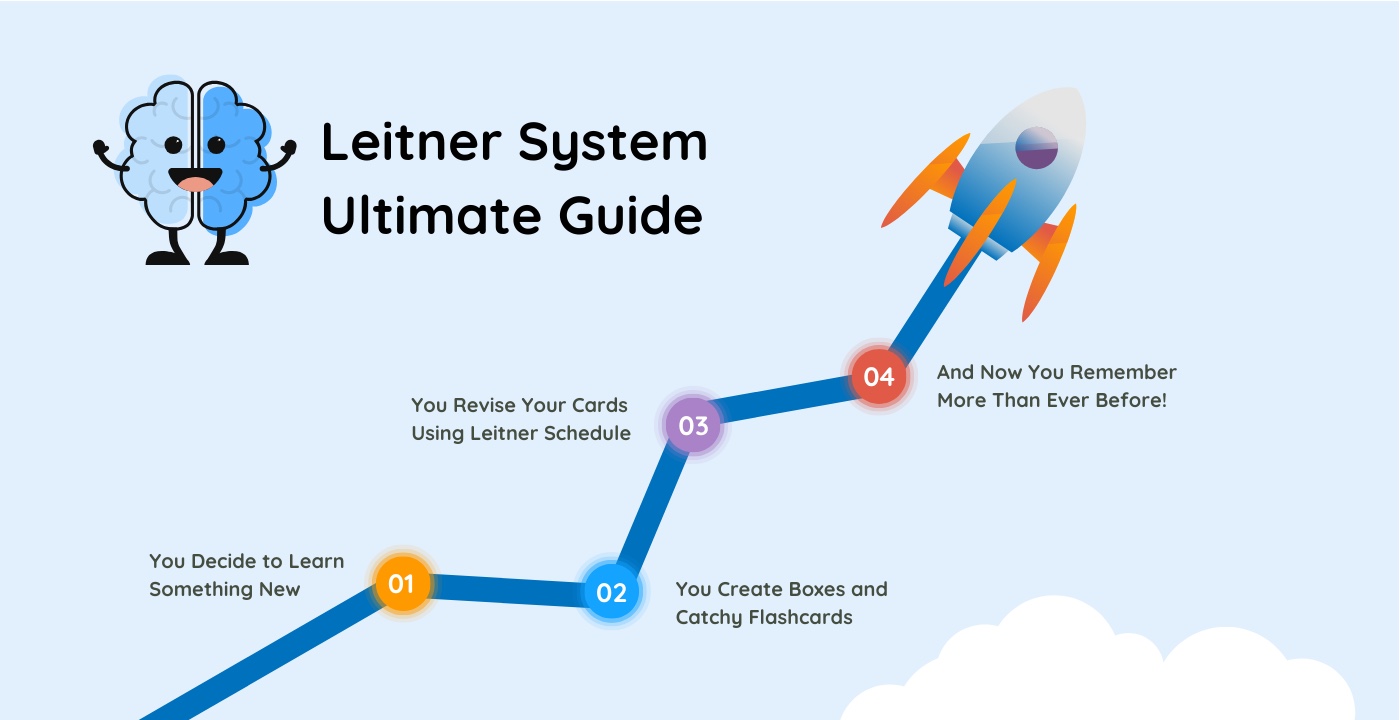

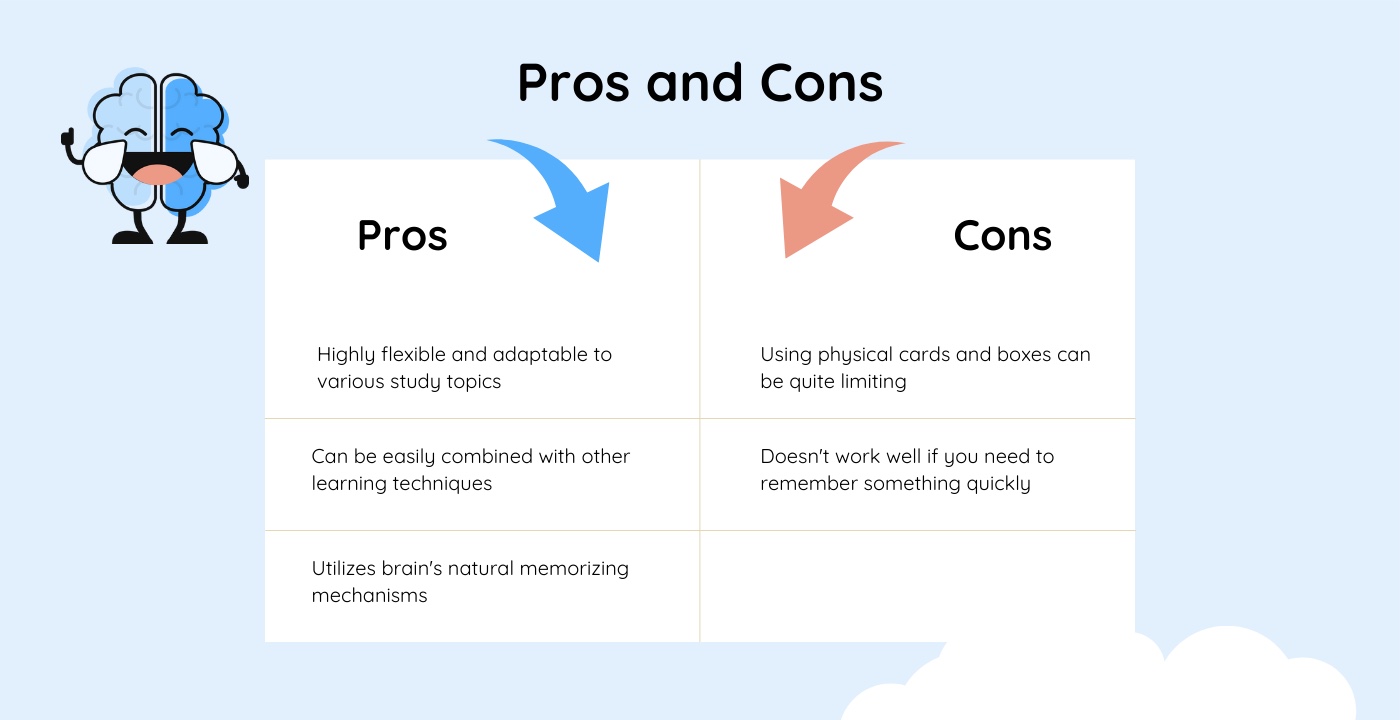
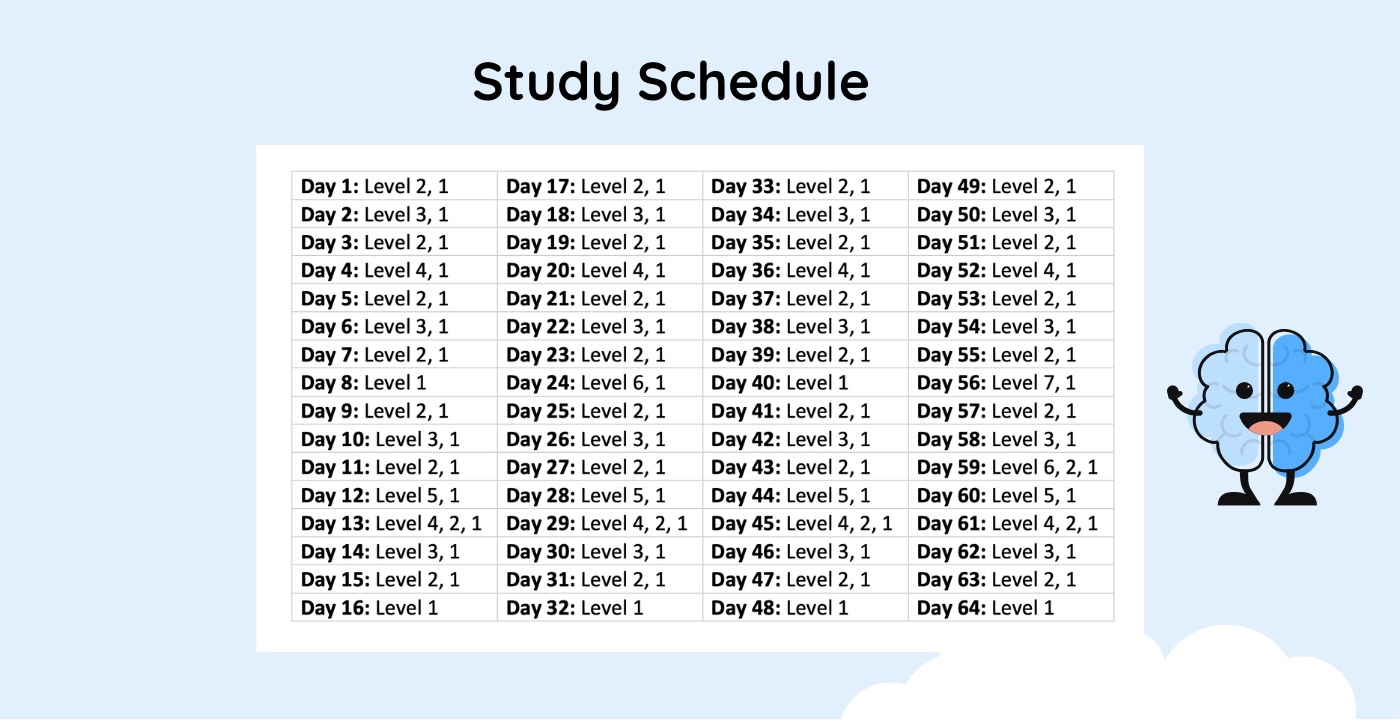
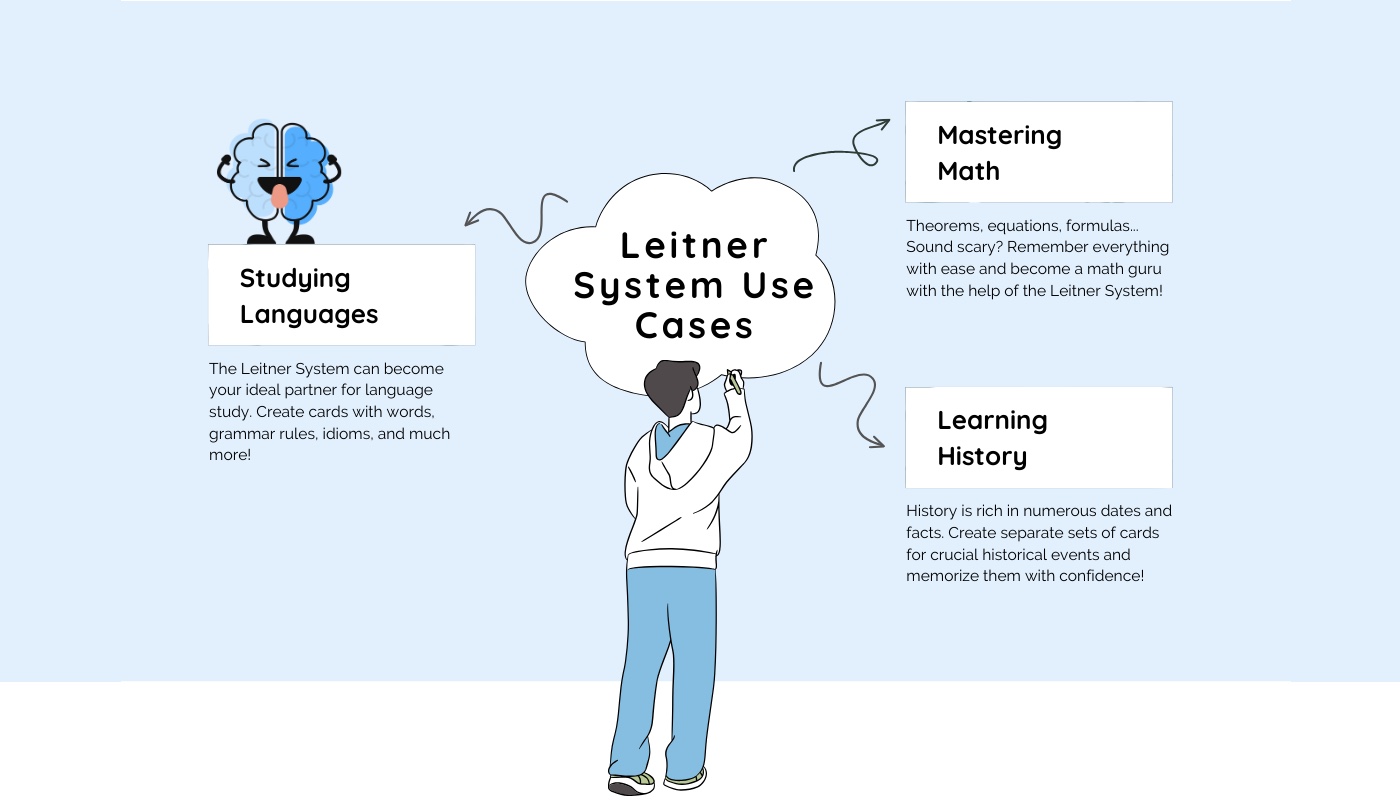
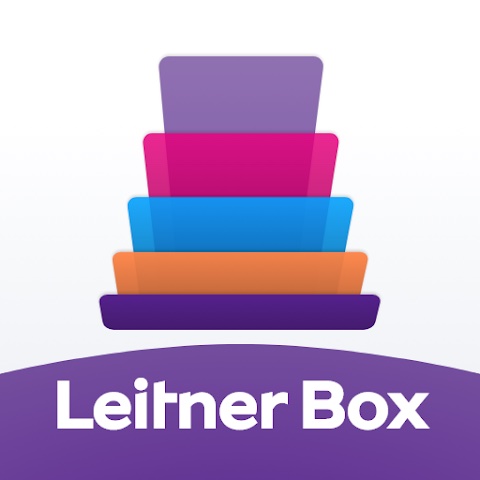
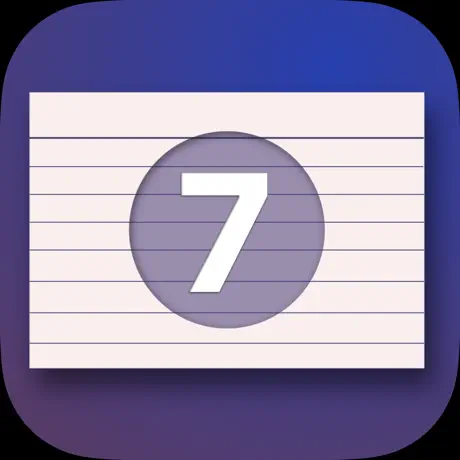
Download our app right now (it’s free) and unlock the world of knowledge at your fingertips.
How Short Breaks Can Refresh Your Mind and Improve Focus
Jul
Update for Leitner Box App: Version 1.1.9 is Here!
Jul
Finding motivation for learning
Jun
Brain Power Up: How Daily Habits Boost Memory and Keep You Sharp
Jun
Never Too Late to Learn. Unleash Your Brain’s Remarkable Flexibility with Neuroplasticity
Jun
Exciting Updates 1.1.8 to Enhance Your Learning Experience!
May